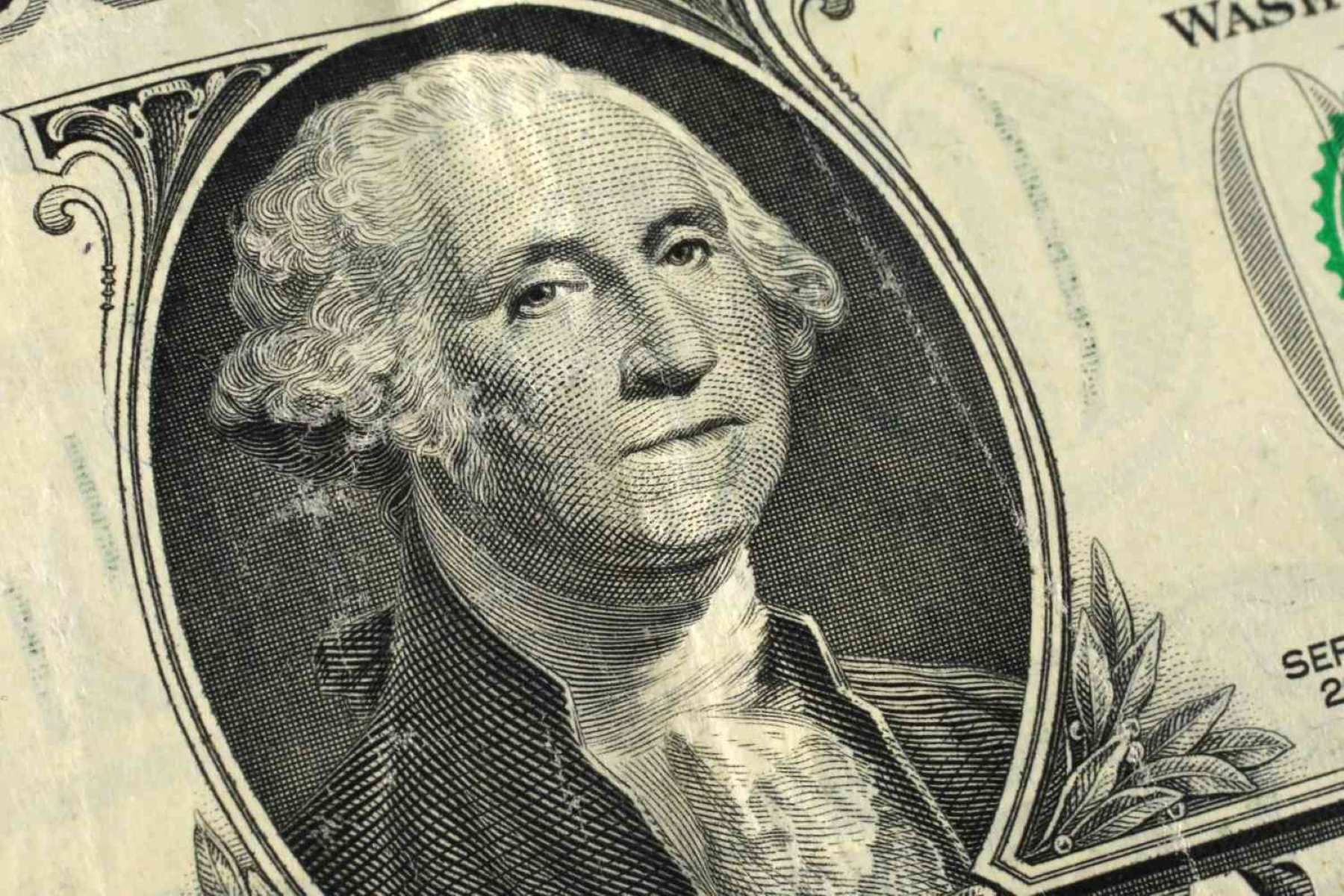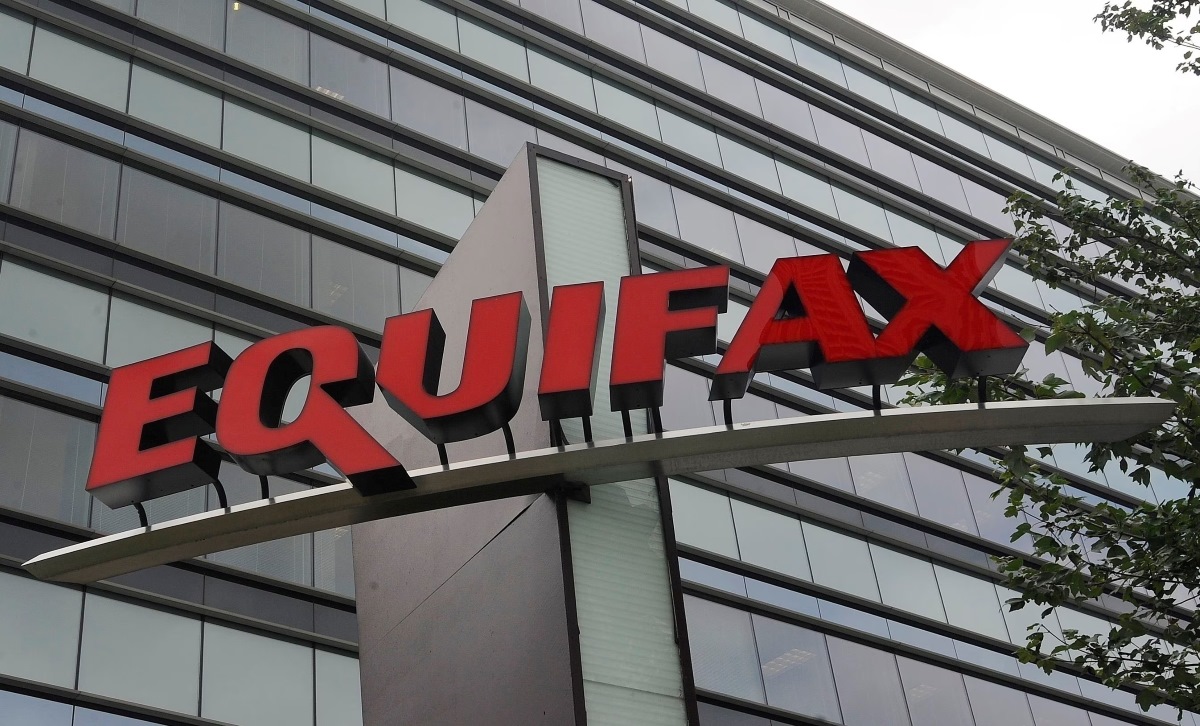

Finance
If The Dollar Crashes, What Happens To Stocks
Published: January 19, 2024
Find out the impact on the stock market if the dollar crashes. Explore the relationship between finance and stocks in this informative article.
(Many of the links in this article redirect to a specific reviewed product. Your purchase of these products through affiliate links helps to generate commission for LiveWell, at no extra cost. Learn more)
Table of Contents
Introduction
The dollar is considered the global reserve currency and has a significant impact on the world economy. As a result, any fluctuations or crashes in the value of the dollar can have far-reaching consequences, including potential effects on the stock market. This has led to the question: what happens to stocks if the dollar crashes?
To understand the potential impact, it is crucial to grasp the relationship between the dollar and stocks. In general, a strong dollar is often seen as beneficial for stocks, as it indicates a robust and stable economy. A weak dollar, on the other hand, can introduce a level of uncertainty and instability, which can have implications for stock markets.
However, it is important to note that the relationship between the dollar and stocks is complex and influenced by various factors. In this article, we will explore the potential consequences of a dollar crash on stocks and discuss strategies that investors can consider to mitigate risk and potentially find opportunities.
Understanding the Dollar’s Impact on Stocks
The relationship between the dollar and stocks is multi-faceted, and understanding how they are interconnected is crucial for investors. Here are a few key points to consider:
1. Currency Exchange Rates: A weakened dollar can impact currency exchange rates, which in turn affects international trade and the profitability of multinational corporations. When the dollar declines, it makes exports more competitive and can boost the bottom line of companies that rely heavily on international sales. Conversely, a strong dollar can make exports more expensive and hinder the profitability of such companies. Therefore, a dollar crash can have a significant impact on the earnings of multinational corporations, potentially leading to fluctuations in stock prices.
2. Inflation and Interest Rates: The value of the dollar is closely tied to inflation and interest rates. If a dollar crash is accompanied by high inflation, it can erode the purchasing power of consumers, impacting corporate revenues and potentially leading to a decline in stock prices. Additionally, a dollar crash may prompt the central bank to adjust interest rates in an effort to stabilize the economy. Changes in interest rates can influence borrowing costs for businesses, affecting their profitability and, consequently, stock performance.
3. Investor Sentiment and Risk Appetite: Changes in the value of the dollar can impact investor sentiment and risk appetite. A dollar crash may be perceived as a sign of economic uncertainty, leading investors to seek safe-haven assets or adopt a more risk-averse approach. This shift in sentiment can lead to increased market volatility and a decline in stock prices.
4. Commodity Prices: The dollar has an inverse relationship with commodity prices. When the dollar weakens, it generally leads to an increase in commodity prices, as commodities are priced in dollars. This can impact various industries, such as energy and materials, and consequently, the stocks of companies within these sectors. A dollar crash can therefore have a cascading effect on the stock market, indirectly impacting companies reliant on commodity prices.
Overall, the relationship between the dollar and stocks is intricate and influenced by numerous interrelated factors. It is essential for investors to monitor these dynamics and stay updated on the global economic landscape to make informed investment decisions. In the next section, we will delve into some of the factors that can potentially lead to a dollar crash.
Factors Leading to a Dollar Crash
A dollar crash is not an everyday occurrence, but it can happen under certain circumstances. Understanding the factors that can lead to a dollar crash can help investors anticipate potential risks and adjust their strategies accordingly. Here are some key factors to consider:
1. Economic Weakness: A weakening economy can put downward pressure on the value of the dollar. Factors such as high levels of debt, sluggish economic growth, or a widening trade deficit can erode confidence in the currency, leading to a decline in its value. Economic indicators such as GDP growth, unemployment rates, and consumer spending can provide insights into the health of the economy and potential risks to the dollar.
2. Geopolitical Uncertainty: Geopolitical events and tensions can have a significant impact on currency markets, including the value of the dollar. Political instability, trade disputes, or unexpected geopolitical events can create uncertainty and volatility, prompting investors to seek refuge in alternative currencies or assets. Any perceived weakness or uncertainty regarding the stability of the United States can potentially weigh on the dollar and trigger a crash.
3. Monetary Policy Decisions: Monetary policy decisions by the Federal Reserve can influence the value of the dollar. Changes in interest rates, quantitative easing programs, or shifts in Fed’s stance toward monetary policy can impact investor sentiment and the attractiveness of the dollar. If investors believe that the Federal Reserve is adopting a loose monetary policy or has lost control over inflation, it can lead to a decrease in the demand for dollars and a subsequent crash.
4. Excessive Debt Levels: High levels of government debt or household debt can undermine faith in the currency. If investors perceive that a country’s debt burden is unsustainable, it can erode confidence in the currency’s long-term value, potentially leading to a crash. Countries with significant budget deficits or a history of defaulting on debt payments are particularly vulnerable to currency crises.
5. Shifts in Global Reserve Currency Preferences: The dollar’s status as the global reserve currency provides it with stability and demand. However, if there is a significant shift in global reserve currency preferences, it can weaken the dollar. For example, if central banks and investors begin to diversify their reserves away from the dollar and toward other currencies or assets, it can put downward pressure on the dollar’s value.
While the occurrence of a dollar crash is not guaranteed, being aware of these factors can help investors recognize potential risks and navigate the financial markets more effectively. In the next section, we will explore the potential effects of a dollar crash on stocks and how investors can prepare for such scenarios.
Effects of a Dollar Crash on Stocks
A dollar crash can have significant effects on the stock market, impacting both individual stocks and the broader market indices. Here are some potential consequences to consider:
1. Stock Market Volatility: A dollar crash can lead to increased stock market volatility. Uncertainty and instability in the currency markets can spill over into the stock market, causing fluctuations in stock prices. Investors may become more cautious and risk-averse, leading to heightened volatility and potentially larger swings in stock prices.
2. Impact on International Stocks: A weakened dollar can affect companies with significant international exposure. When the dollar declines, it can make U.S. goods and services more competitive in the global market, benefiting multinational corporations with a large portion of their revenue derived from international sales. Conversely, a strong dollar can make U.S. exports more expensive and potentially hinder the profitability of such companies. A dollar crash can therefore create winners and losers within the stock market, depending on the degree of international exposure.
3. Inflationary Pressures: A dollar crash can lead to inflationary pressures. If the value of the dollar declines, it can increase the cost of imported goods, such as raw materials or oil. This, in turn, can drive up production costs for businesses and potentially lead to higher consumer prices. Companies may face challenges in passing on increased costs to consumers, which can impact their profit margins and ultimately their stock prices.
4. Sector Performance: Different sectors of the stock market can be impacted differently by a dollar crash. For example, sectors such as materials, energy, and commodities tend to benefit from a weaker dollar as it makes their exports more competitive. On the other hand, sectors like consumer staples and utilities, which rely on imported goods and have high levels of debt, may face challenges due to increased costs associated with a weakened dollar.
5. Investor Sentiment: A dollar crash can affect investor sentiment and confidence in the broader market. Negative perception of the economy and currency can lead to increased market sell-offs and a cautious approach from investors. Lower investor confidence can dampen stock market performance and potentially lead to a broader market decline.
It’s important for investors to stay informed and monitor the potential effects of a dollar crash on the stock market. By understanding the dynamics at play, investors can adjust their portfolios and investment strategies to mitigate risk and potentially take advantage of any opportunities that may arise. In the next section, we will explore potential opportunities for investors in the event of a dollar crash.
Stock Market Volatility
A dollar crash can lead to increased stock market volatility, as uncertainties and changes in the currency markets can impact investor sentiment and risk appetite. Here are some key points to consider regarding stock market volatility in the event of a dollar crash:
1. Fear and Uncertainty: A dollar crash can create fear and uncertainty in the financial markets. Investors may become nervous about the implications of a depreciating currency and the potential impact on the broader economy. Heightened uncertainty can drive up volatility as investors adjust their portfolios and trading strategies in response to market dynamics.
2. Increased Trading Volume: During times of heightened volatility, trading volume tends to increase as investors actively buy and sell stocks. This increased trading activity can exacerbate price movements, leading to larger swings in stock prices. It’s important for investors to be mindful of this increased volume and its potential impact on market liquidity.
3. Impact on Short-Term Trading Strategies: Short-term traders, such as day traders or high-frequency traders, may be more heavily affected by stock market volatility resulting from a dollar crash. The rapid price fluctuations and increased volatility can present both opportunities and risks for these traders. It’s essential for short-term traders to have robust risk management strategies in place to navigate the volatility effectively.
4. Long-Term Investment Considerations: For long-term investors, stock market volatility caused by a dollar crash may present opportunities to enter the market at more favorable prices. However, it is crucial to remain focused on the underlying fundamentals of the companies being invested in. Volatility can create opportunities for value investors to pick up stocks with strong fundamentals but may have experienced temporary price declines due to market turbulence.
5. Risk Management: Managing risk becomes even more important during periods of increased stock market volatility. It is vital to maintain a well-diversified portfolio across different asset classes, sectors, and geographies. This diversification can help mitigate the potential impact of a volatile stock market and cushion the effects of a dollar crash.
During times of stock market volatility, it is essential to stay informed, monitor market trends, and maintain a disciplined investment approach. While volatility can present both risks and opportunities, investors should focus on their long-term investment goals and avoid making impulsive decisions based on short-term market fluctuations.
Impact on International Stocks
A dollar crash can have a significant impact on international stocks, as currency fluctuations directly affect the profitability of multinational corporations. Here are some key points to consider regarding the impact on international stocks in the event of a dollar crash:
1. Currency Exchange Rates: A dollar crash can result in a weaker U.S. dollar relative to other currencies. This can have implications for companies with significant international operations or foreign revenue sources. When the dollar depreciates, it can make goods and services produced by U.S.-based companies more competitively priced in international markets. As a result, companies with a significant portion of their revenues derived from overseas sales may experience a boost in earnings when their U.S. dollar-denominated earnings are converted into a weaker currency.
2. Earnings Impact: The impact on global companies will depend on the proportion of their revenue generated from outside the United States. Companies with higher international exposure may benefit from a dollar crash, as their foreign revenue streams become more valuable when converted back into a weaker U.S. dollar. Conversely, companies with a larger share of domestic operations may face headwinds as their exports become relatively more expensive in foreign markets.
3. Geographic Diversification: Investors who hold a diversified portfolio of international stocks may find that a dollar crash affects their investments differently depending on the respective currencies. For example, a dollar crash can benefit investors holding stocks denominated in currencies that strengthen against the weakened dollar. On the contrary, investors holding stocks denominated in currencies that weaken against the dollar may experience a negative impact on their returns.
4. Emerging Markets: Emerging market economies are often more sensitive to currency fluctuations. A dollar crash can lead to increased volatility in emerging market currencies, impacting the performance of stocks in these markets. Investors should carefully evaluate their exposure to emerging market economies and consider the potential risks associated with currency depreciation in these regions.
5. Hedging Strategies: Investors who wish to mitigate the impact of a dollar crash on international stocks may explore hedging strategies. Hedging involves using financial instruments to offset potential losses caused by currency fluctuations. This can help protect against adverse currency movements and provide stability to international investments, although it’s important to note that hedging strategies come with their own costs and considerations.
It is crucial for investors to closely monitor their exposure to international stocks and the potential impact of a dollar crash. Analyzing the geographic revenue distribution of the companies in their portfolio can provide insights into the potential effects of currency fluctuations. Diversification across different currencies and regions, as well as careful consideration of hedging strategies, can help manage the impact of a dollar crash on international stocks.
Potential Opportunities for Investors
While a dollar crash can introduce uncertainties and challenges to the financial markets, it can also present potential opportunities for investors. Here are some areas where investors may find opportunities:
1. Commodities and Natural Resources: A weakened dollar often leads to an increase in commodity prices. Investors can consider allocating a portion of their portfolio to commodities such as gold, silver, oil, or agricultural products. Companies engaged in the production or exploration of natural resources may also benefit from higher commodity prices, presenting potential investment opportunities.
2. Export-Oriented Companies: Companies that rely heavily on exports may find their products becoming more competitive in international markets when the dollar weakens. Investors can consider industries such as manufacturing, technology, or consumer goods companies with a significant export presence. However, it is important to evaluate the company’s ability to navigate international markets and potential risks associated with global trade dynamics.
3. Emerging Markets: Emerging market economies can experience benefits from a dollar crash. Investors can consider allocating a portion of their portfolio to emerging market stocks, as these markets may exhibit strong growth potential and could benefit from a weakening dollar. However, it’s important to carefully evaluate the risks associated with investing in emerging markets, including political stability, currency volatility, and regulatory considerations.
4. Alternative Investments: In times of uncertainty and market volatility, some investors may seek refuge in alternative investments such as real estate, hedge funds, private equity, or cryptocurrencies. These investments may offer diversification benefits and potential returns uncorrelated with traditional financial markets. However, it’s important to thoroughly research and understand the risks associated with these alternative investments before allocating capital.
5. Defensive Stocks: Defensive stocks, or those that tend to be less affected by economic downturns, can provide stability in times of market volatility. These stocks are typically found in sectors such as healthcare, utilities, or consumer staples, which offer products or services that are considered essential regardless of the economic conditions. Investors may consider allocating a portion of their portfolio to defensive stocks as a way to mitigate potential risks during a dollar crash.
It’s important to note that investing in any opportunity carries inherent risks. Investors should conduct thorough research, consider their risk tolerance, and consult with a financial advisor before making any investment decisions. Diversification and maintaining a long-term investment perspective are key principles to mitigate risks and potentially capitalize on opportunities that arise as a result of a dollar crash.
Strategies to Mitigate Risk
When facing the potential risks associated with a dollar crash, investors can employ various strategies to help mitigate their exposure and protect their portfolios. Here are some strategies to consider:
1. Diversification: Diversifying your investments across different asset classes, sectors, and geographic regions can help reduce risk. By spreading investments across a range of assets, you can potentially offset any negative impact from a dollar crash in one particular area with positive returns in another.
2. Hedging Currency Risk: Investors who have significant exposure to international stocks or currencies can consider implementing hedging strategies to mitigate currency risk. Hedging involves using financial instruments such as futures contracts or currency options to offset potential losses caused by currency fluctuations.
3. Focus on Quality Companies: Investing in high-quality companies with strong fundamentals can provide a level of resilience during market downturns. Companies with solid financials, robust business models, and a history of generating consistent earnings may be better positioned to weather the impacts of a dollar crash.
4. Long-Term Investing: Taking a long-term investment approach can help mitigate the short-term impact of market volatility caused by a dollar crash. By focusing on the underlying fundamentals of your investments and staying committed to your investment strategy, you can ride out market fluctuations and potentially benefit from the recovery and growth over the long run.
5. Regular Portfolio Review: Conducting regular portfolio reviews is crucial to assess your investments’ performance and adjust your allocation as needed. Assess the impact of a dollar crash on your portfolio holdings and make any necessary adjustments to align with your investment objectives and risk tolerance.
6. Stay Informed: Keep a pulse on global economic trends and stay informed about developments in currency markets. Stay updated on economic indicators, geopolitical events, and central bank policies that may impact currency values and the potential risks associated with a dollar crash. Being well-informed can help you make more informed investment decisions.
7. Consult with a Financial Advisor: Seeking guidance from a qualified financial advisor can provide valuable insights and customized strategies to mitigate risk during a potential dollar crash. An advisor can help assess your investment goals, risk tolerance, and recommend suitable strategies to protect and grow your portfolio.
Remember that no strategy can completely eliminate the risk of a dollar crash or market volatility. However, by following these strategies and staying disciplined in your approach, you can potentially reduce the impact of a dollar crash on your overall investment portfolio.
Conclusion
A dollar crash can have far-reaching implications for the global economy and financial markets, including the stock market. Understanding the potential effects of a dollar crash on stocks is essential for investors to navigate and adapt their investment strategies. While a dollar crash can introduce uncertainties and challenges, it can also create opportunities for astute investors.
Fluctuations in the value of the dollar can impact stock market volatility, investor sentiment, and the performance of international stocks. It’s important for investors to consider factors such as currency exchange rates, inflation, and interest rates when analyzing the potential impact of a dollar crash on stocks. By staying informed and monitoring key indicators, investors can better position themselves to identify potential risks and opportunities.
Investors can take proactive measures to mitigate the impact of a dollar crash. Strategies such as diversification, currency risk hedging, focusing on quality companies, and maintaining a long-term investment perspective can help mitigate risk and guard against market volatility. Regular portfolio review, staying informed, and seeking guidance from a financial advisor are also key components of a robust risk management strategy.
While no strategy can completely eliminate the risks associated with a dollar crash, a well-informed and disciplined approach can help investors weather market turbulence and potentially seize opportunities that arise during these times of uncertainty.
Ultimately, investors should assess their individual risk tolerance, investment goals, and time horizon when considering the potential impact of a dollar crash. By maintaining a diversified portfolio and adopting prudent investment practices, investors can position themselves to navigate through market fluctuations and strive for long-term financial success.














